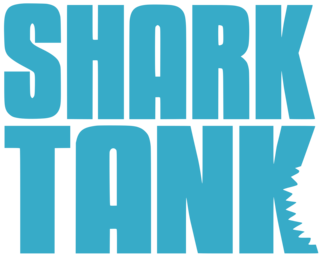Health
Developing a Business Idea Worthy of Shark Tank
How to create a smart business idea and plan, step by step.
Posted January 16, 2019

Seeking to control their destiny, many people would love to come up with an idea and business plan that has a good chance of success without incurring much risk, the kind of business plan that would make even the toughest Shark, Kevin O’Leary on the TV show, Shark Tank, invest, or should I say bite.
Here’s how I help my clients develop such a plan.
The idea
Many of my clients are passion-driven: They’d only put in the work to create a business if the product or service is something they’re passionate about. To that end, I invite such clients to inventory their life to identify pain points and pleasure points. First I ask them to think through a typical day from the moment they wake up until the moment they’re asleep: “What annoys you that a product or service could ameliorate?" For example, a client today said she’s annoyed that she has to futz quite a bit with her pillow until her head nestles between its sides yet there’s enough filling left in the middle that it feels soft. So I came up with the idea of a pillow in which the sides are bendable and retain the new shape, and the middle is overfilled with little packets of foam, some firmer, some softer, and the user unzips the pillow, removes some of one or both types of packets until it’s perfect. We ended up coming with ideas she likes better and she said she won't pursue the pillow idea or I wouldn’t have described it to you.
I also ask clients to inventory their life’s components: work, transportation, physical health, mental health, relationships, recreation, and home. Any pain or pleasure points there? For example, I have a client who values her home being welcoming. So we “walked” through her home, which spawned this idea: custom welcome mats with a photo of the buyer’s choosing, perhaps a family photo) perm-inkjetted into the mat. The mats would be sold on the Net or she’d license the technology to a website that sells personalized items such as Etsy, Zazzle, or CafePress. We came up with ideas she likes better or I wouldn’t have revealed it here.
Other people don’t need to feel passion for the product. They feel they’ll get passionate enough as long as the financial prospects are good. For those clients, we walk through their work and personal life to identify unmet needs. For example, I had a client who worked for a corporation that had offices on both the New York and the New Jersey sides of the Hudson River. The company had spent a fortune on taxis for its employees to go to and from its two offices. My client showed the company how it could save lot of money (while still leaving him plenty income) by having a dedicated shuttle service. He had no particular interest in shuttle vans but saw that it was a low-risk, high-payoff business, and he did it. If he decides he wants more money, it’s an idea that could be done for other companies in similar situations.
The business plan
Money is any business’s lifeblood—You can’t afford to bleed out before more money pours in. So it’s crucial for a startup to conduct low-risk/low-cost experiments to determine where to spend money and even whether to continue the business.
Let’s take the pillow example. First, its name matters. Perhaps it could be called Taco Pillow. That’s alliterative, makes one curious to what it means, and describes the pillow’s functionality: nesting the head between the pillow’s two moldable-foam sides, like a taco.
Next, I’d do a Google search to see if such foam is available or would need to be custom-made. I’d supplement the Google search with a phone call to a major foam retailer and/or manufacturer, which the aforementioned Google search would reveal. For the prototype, unless I could inexpensively get a sample made of my custom-foam pillow, I’d use commercially available foam for the sides and Tyvec packets. If needed, I’d hand-stuff and glue shut the packets. If I later decided to go into production, I’d certainly investigate using custom foams so the product was so good that the word-of-mouth and online reviews would be exceptional.
I’d then throw a party in which I asked attendees to try the prototype, give feedback, and make suggestions about its name, logo, price, manufacture, distribution, packaging, marketing, and financing.
Next, with prototype and those ideas in hand, I’d visit a local small boutique that sold pillows and a high-volume department store where I’d talk with the manager of the bedding department. I’d ask for honest feedback on whether s/he thought it would sell and any suggestions s/he might have.
The takeaway
So, with minimal cost, time, and hassle—and probably a lot of fun—you may be able to go from clueless to a good business plan that promises self-sufficiency and control of your destiny, or the sense that you'd be wiser to try something else, worthwhile in itself.
I read this aloud on YouTube.


